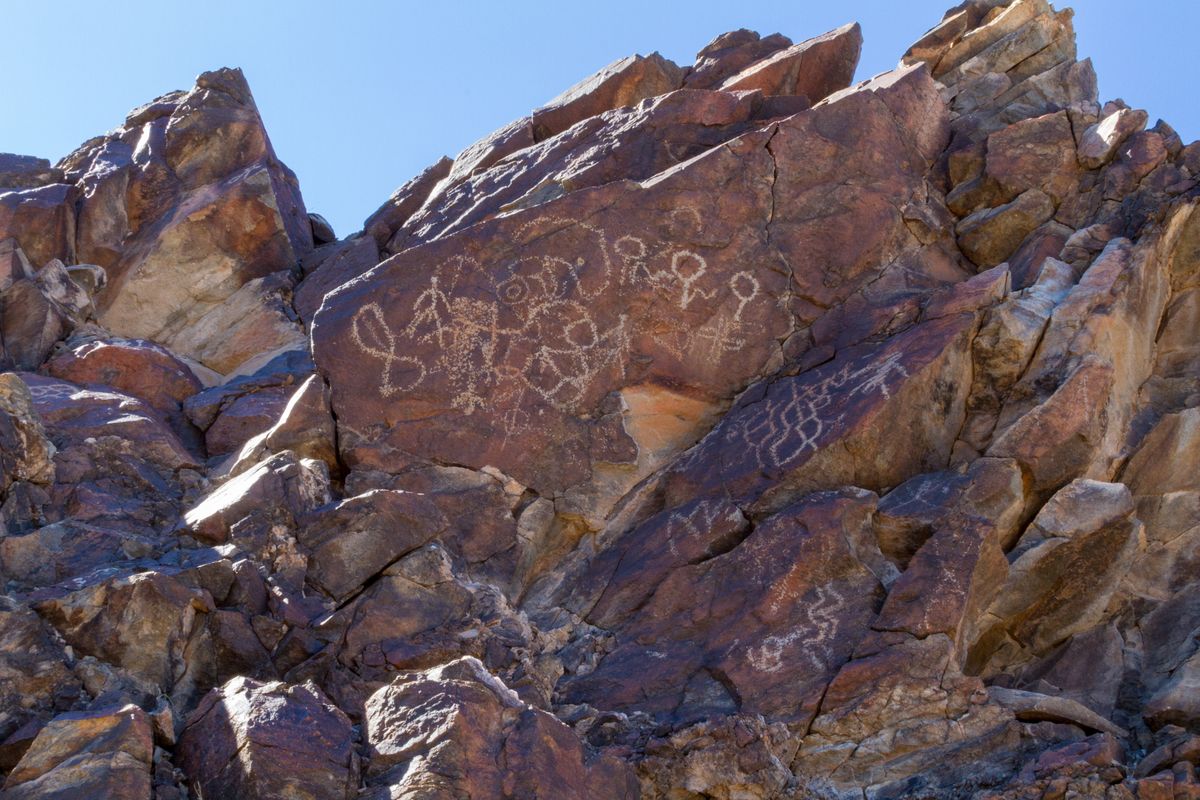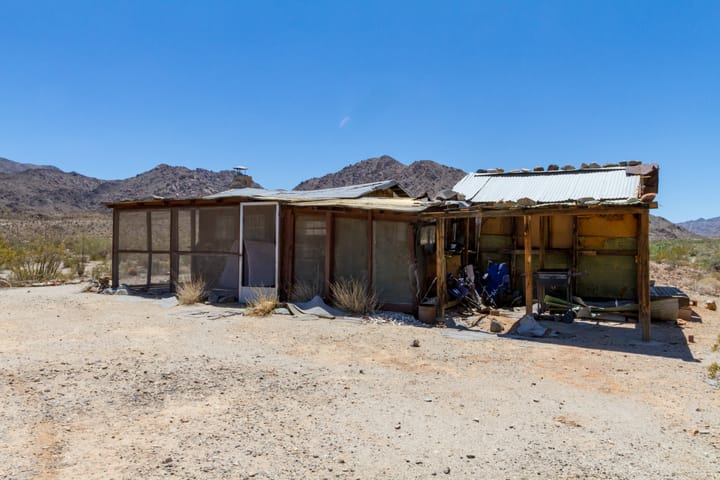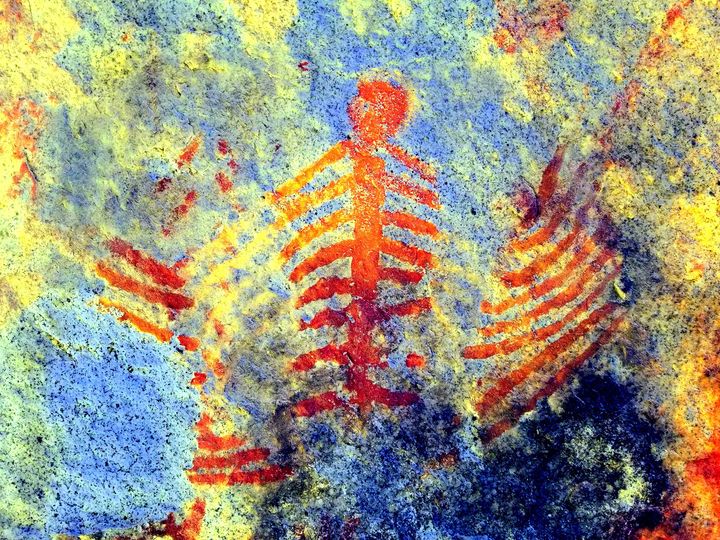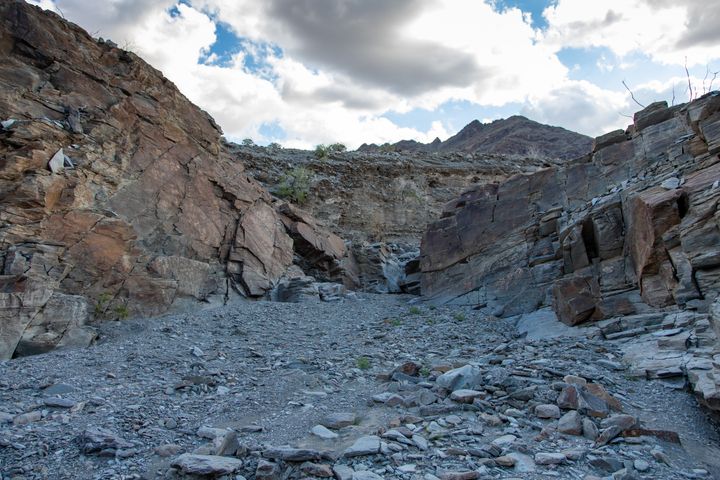Mule Tank is a small, seasonal tinaja along the foothills of the Mule Mountains along the Colorado River. It is a long walk to any other source of water, so this catchment would have been an essential source of water in this vast and arid region. The petroglyphs themselves are in the small canyon below and at the tank.
Ancestral Chemehuevi and Mojave Native American groups were both in this area and likely made some, if not all, of the petroglyphs here.
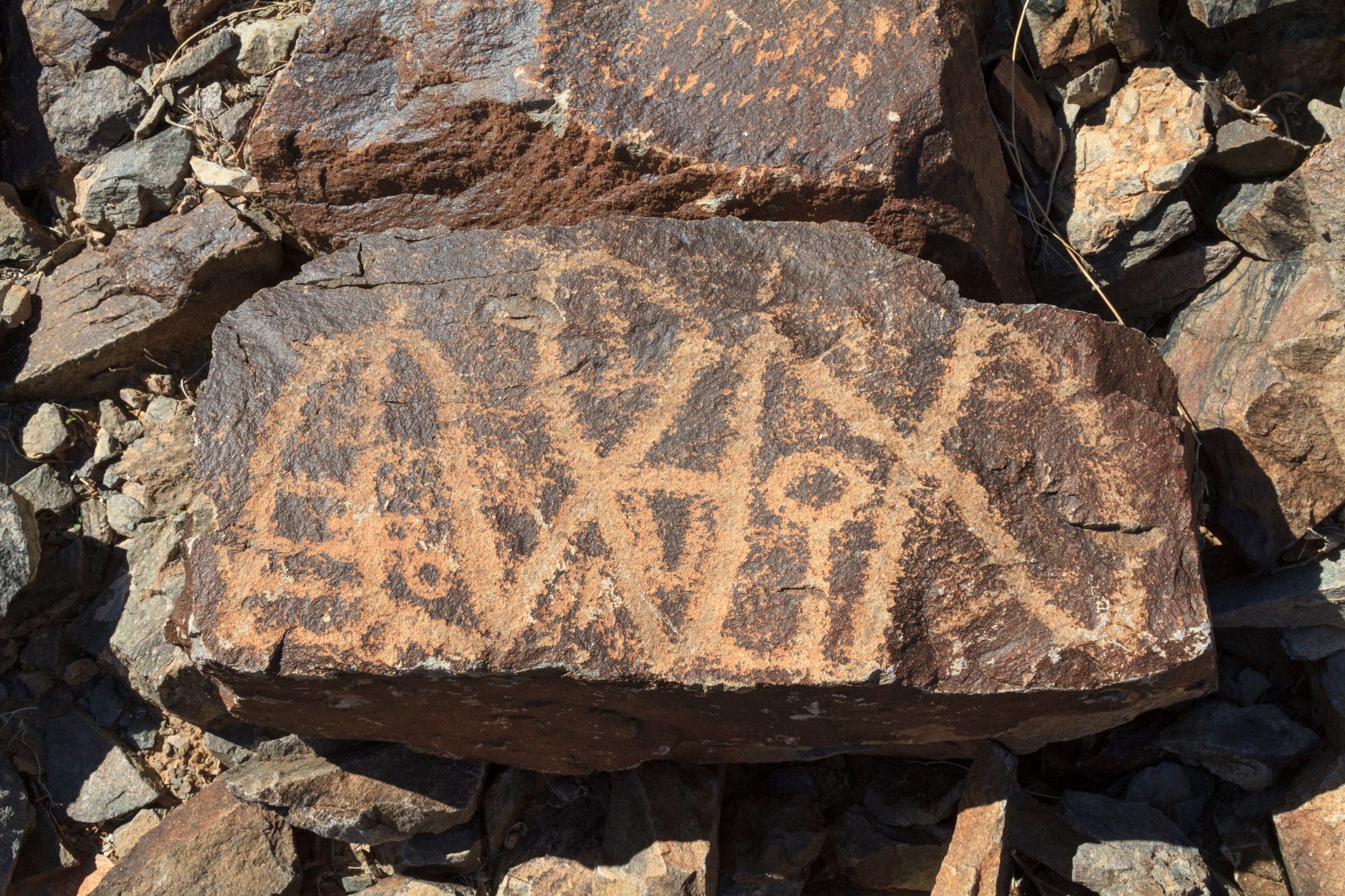
Not far from Mule Tank and along a native trail are a series of intaglios (also sometimes called geoglyphs). An intaglio is where rocks are removed to create a negative image. These intaglios were probably made for group ceremonies like dances and rituals. The intaglios here are sets of circles, cleared of desert pavement, that lay in a semicircular pattern adjacent to the trail on the gravel bench above the wash.
A large circular trail also crosses over one of the long-distance trails here. It is probably a dance circle. A dirt road has destroyed part of it, but enough remains that you can clearly see it.
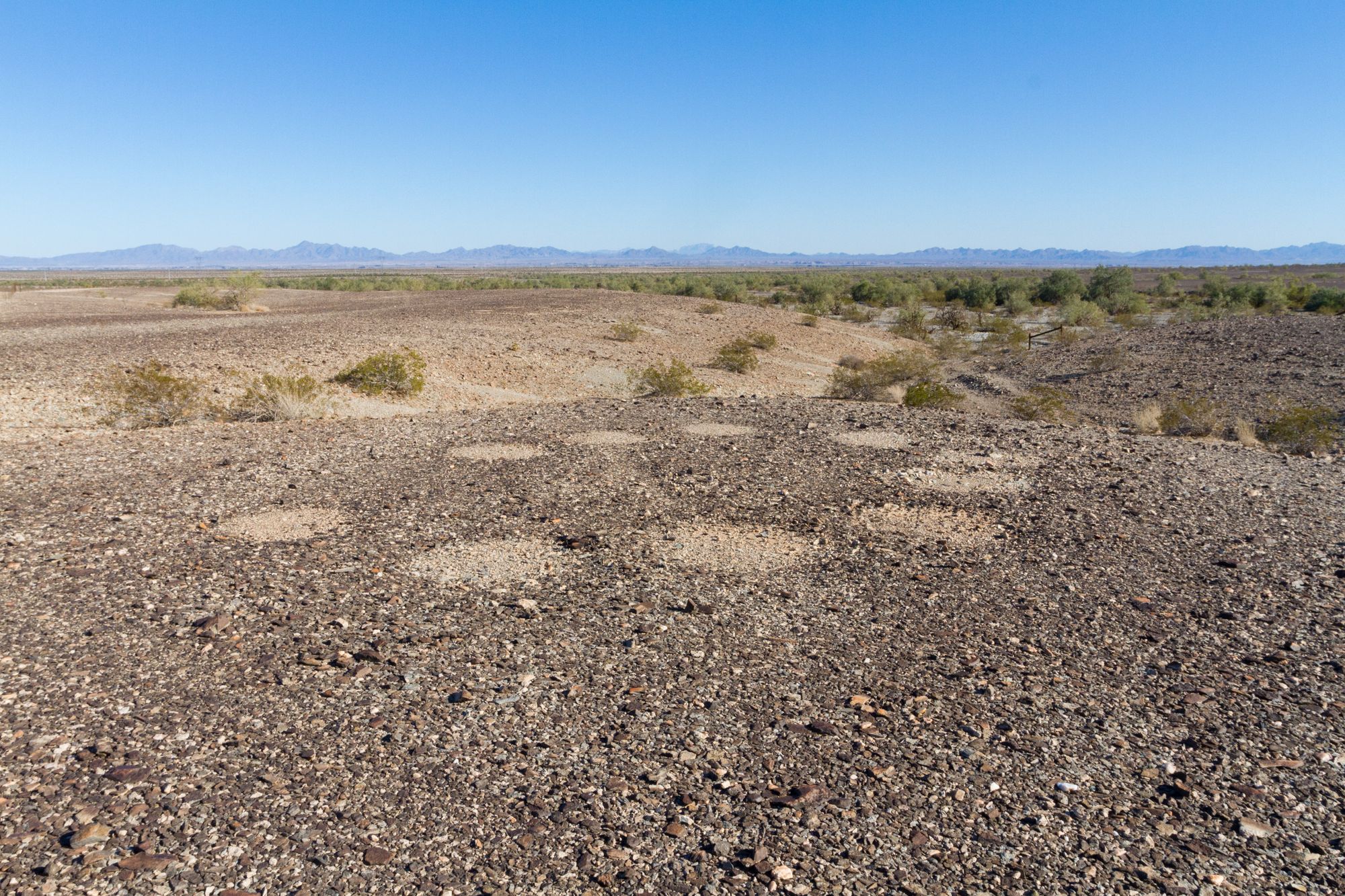
Indian trails cross great distances over the open desert, usually from one water source to another, for trade and contact. One of the trails here leads to Corn Springs, some thirty miles away, and another heads over to the Colorado River.
Check out the Dzrtgrls site, which has a trip report on Mule Tank.
